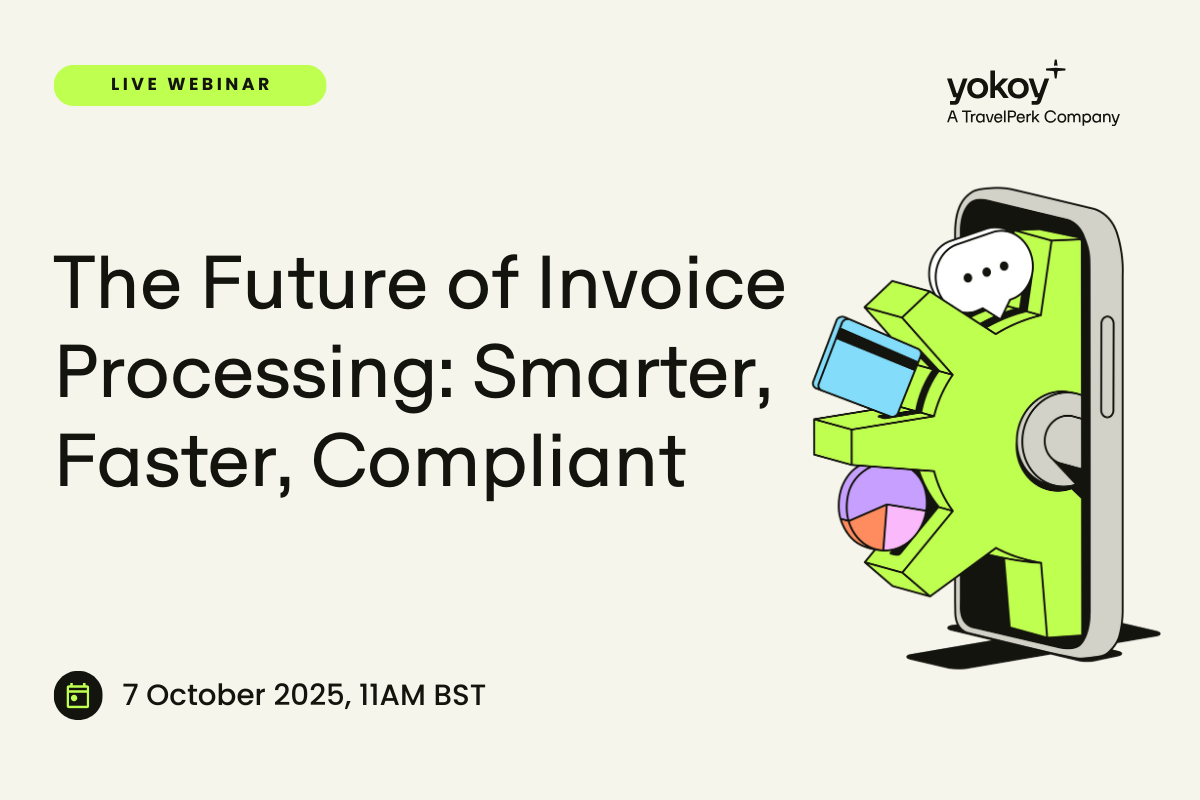Home / Setting Vendor Limits for Better Spend Control
Setting Vendor Limits for Better Spend Control
- Last updated:
- Blog

Managing vendor relationships and keeping spending in check can be challenging for businesses in today’s fast-paced financial environment. Without clear vendor limits and guidelines, spending can easily get out of control, leading to budget overruns, compliance issues, and inefficiencies. For your finance teams, account payable (AP) managers and chief finance officers (CFOs), setting vendor limits is essential for ensuring that spending aligns with your company’s financial objectives while protecting against unnecessary expenditures.
Vendor limits allow your businesses to gain tighter control over spending, ensuring that purchases remain within predefined thresholds and streamlining the purchasing process. These limits act as financial guardrails, helping to optimise budgets and offering clearer visibility into company-wide spending patterns. Without such oversight, your finance departments may struggle with manual processes, increasing the risks of unauthorised purchases, fraud, and poor cash flow management.
In addition, vendor limits are critical for ensuring compliance with financial policies, procurement guidelines, and regulatory requirements. By proactively managing how much can be spent with each supplier, businesses can prevent overspending and improve decision-making through real-time data and metrics.
Let’s see how setting limits pushes your company’s financial transformation and leads to better budget adherence, reduced risk of fraud and a more secure foundation for long-term business growth!
Risks of uncontrolled vendor spending
Uncontrolled vendor spending can cause several serious problems, particularly in managing budgets, preventing fraud, and maintaining financial oversight. These issues can harm a company’s financial health and make achieving long-term profitability and running efficiently harder.
One of the most immediate risks is budget overruns. Without clear limits on vendor spending, purchases can easily exceed budgets. This lack of control makes it difficult for finance teams to manage cash flow and stay on target. Budget overruns can stretch a company’s finances, forcing cost-cutting in other areas or causing missed financial goals. Over time, repeated breaches can disrupt plans and limit investment in growth or innovation.
Unregulated vendor spending also raises the risk of fraud. Without oversight and limits, employees or external parties may take advantage by making unauthorised purchases, inflating invoices, or manipulating vendor relationships. Fraud can go unnoticed for longer when there’s limited visibility into spending patterns, leading to financial losses, legal trouble, and damaged trust.
Another major issue is a lack of visibility. Without enforced spending limits, finance teams struggle to track and analyse where company money is going. This lack of transparency leads to inefficiencies, making it harder to spot trends, fix irregularities, or optimise vendor relationships. Limited visibility also hinders accurate financial forecasting, making it tough to predict future spending or ensure policy compliance.
Blog article
Why Smart Corporate Cards Are a Must for Businesses
Payment methods have been undergoing a massive modernization phase, and the traditional corporate credit card is no exception. But the real question is, are these cards truly smart or just another gimmick?

Francesca Burkhardt,
Product Marketing
Benefits of setting vendor limits for spend control
Setting vendor limits offers several key benefits that empower businesses to achieve better spend control and overall financial stability.
Here are some of the most beneficial features:
Enhanced budget management: Vendor limits help businesses stay within budget and avoid overspending. By setting spending limits, finance teams can better use resources across departments, leading to better cash flow and smarter financial planning. Setting these boundaries also prevents last-minute adjustments or emergency cost-cutting measures, allowing companies to stay on track with their financial goals and improve the bottom line.
Clearer spend visibility: Vendor limits give businesses greater visibility of spending patterns. By setting caps on vendor payments with smart corporate cards and automating expense reports, finance teams can easily track expenditures and assess whether they align with company policies. This visibility enables finance leaders to spot trends, categorise expenses, identify irregularities and make informed decisions to optimise vendor and supplier relationships or negotiate better terms. Improved visibility makes it easier to understand how funds are being allocated.
Improved financial governance: Vendor limits are crucial for ensuring financial governance and compliance. They create a clear structure for managing financial resources, reducing the likelihood of unauthorised or inappropriate spending. With limits, finance teams can help maintain compliance with company spending policies, foster accountability across departments, and streamline the approval process. This structured approach also helps businesses demonstrate fiscal responsibility, which is crucial in industries with strict compliance requirements and for maintaining stakeholder confidence.
Implementing effective vendor limits in 3 steps
Implementing effective vendor limits requires a structured approach to maintain control over spending. This process involves three critical steps: analysing vendor relationships, setting realistic limits, as well as monitoring and adjusting those limits over time.
These three steps can help finance teams to optimise spend control, mitigate risks, and foster stronger vendor management:
Step 1: Analysing vendor relationships
Before setting limits, it’s crucial to analyse existing vendor relationships. This includes reviewing vendors’ engagement, financial impact, pricing, and historical spend data. Vendors must be categorised based on their importance to the business — critical suppliers may require more flexibility, while non-essential providers could have stricter limits. This analysis helps finance leaders and procurement teams set informed limits that balance controlling costs with maintaining effective vendor relationships and payment terms.
Step 2: Setting realistic limits
Once vendor relationships are analysed, realistic, achievable limits should be set. These limits should reflect both historical spending trends and future budget goals, ensuring departments have enough flexibility to meet operational needs. Market conditions, contract terms, or cost fluctuations within the supply chain should be considered realistic. Communicate these limits clearly to all stakeholders involved in the purchasing process and establish approval workflows for managing exceptions.
Step 3: Monitoring and adjusting limits
Vendor limits require ongoing monitoring and adjustments to remain effective. Review vendor performance, spending patterns and budget adherence regularly to identify deviations or risks. Automated management software tools and ERP systems provide real-time insights into company spending, helping to spot potential overspending or vendor issues quickly. Adjust limits as necessary to reflect changes in vendor importance, contract terms, or overall business objectives. Continuous adjustments ensure vendor limits align with evolving financial strategies and operational efficiency. This is especially easy with modern corporate cards.
Blog article
Simplifying Expense Management: How Corporate Cards Benefit Businesses of All Sizes
Although most corporate card programs offer cash back on transactions, these savings aren’t the main driver for companies who choose to equip their employees with business credit cards or debit cards.

Francesca Burkhardt,
Product Marketing
How vendor limits improve financial transparency and compliance
Vendor limits help businesses manage spending and improve financial transparency and compliance with internal and external regulations. These limits provide clear guidelines for managing vendor relationships and ensure compliance in reimbursement processes, contract and supplier management.
Let’s explore each of these aspects in detail:
Enhanced audit readiness: Vendor limits simplify auditing by creating a transparent, traceable record of all spending activities. With clear limits and the possibility to use smart corporate cards automated management processes, finance teams can ensure that payments align with predefined policies, making it easier to present accurate and well-organised financial records during audits. Automated enforcement ensures that any exceptions or policy breaches are flagged and addressed promptly.
Policy compliance: Vendor limits help ensure all spending adheres to internal financial policies and regulatory requirements. By defining clear boundaries, businesses can prevent unauthorised purchases and adequately comply with procurement guidelines and spend management solutions. This approach reduces the risk of non-compliant spending, helping companies avoid fines, penalties, or reputational damage.
Reduced fraud risk: Vendor limits significantly reduce the risk of fraud by capping how much can be spent with each vendor. If transactions exceed predefined thresholds, they are automatically flagged or rejected. This makes it harder for fraudulent activities, such as unauthorised purchases or inflated invoices, to go unnoticed. Automated compliance checks in management tools further safeguard financial resources, ensuring that all transactions are processed according to company rules.
Using technology to automate and enforce vendor limits
Leveraging technology to automate and enforce vendor limits dramatically improves a company’s ability to maintain control over spending and enhance financial governance. Finance teams can streamline operations, reduce human error, and ensure compliance by automating key processes, such as purchase orders, limit enforcement and smart real-time monitoring.
Let’s delve into the key advantages of using technology for managing vendor limits:
Automation of limit enforcement: Automated management systems ensure vendor limits are consistently applied across the organisation. No transaction can exceed set limits without triggering a review or additional approval, preventing overspending and policy violations. Automation also streamlines procurement, payable workflows, and the purchasing process, allowing finance teams to focus on strategic tasks rather than manual approvals.
Real-time monitoring: Technology-driven solutions offer real-time visibility into vendor transactions, enabling instant detection of overspending or policy violations. Real-time alerts prompt finance teams to review transactions before processing, ensuring better control of company spending and cash flow. This instant visibility is key to preventing budget overruns and optimising overall spend control.
Data-driven insights: Automated systems generate data-driven insights that finance teams can use to analyse vendor performance, optimise payment terms, and forecast future costs. These insights help with financial planning and ensure vendor limits keep up with your company’s changing goals and needs.
Customisable approval workflows: Technology allows businesses to create tailored approval workflows, adding another layer of control. Transactions exceeding vendor limits can be routed for senior management approval, ensuring that high-value purchases are properly scrutinised. Customisable workflows adapt to different vendors, departments, or transaction types, improving the overall approval process and maintaining financial control.
Introducing AI-driven Yokoy Pay for better spend control
Yokoy Pay is your advanced AI-driven management software designed to automate and streamline spend control. It empowers you to gain better oversight of vendor relationships, financial transactions and overall spending within your company. By integrating artificial intelligence (AI), Yokoy offers an easy-to-use, comprehensive platform that enforces vendor limits, enhances compliance, and delivers real-time insights.
Let’s explore some of the key features that make Yokoy Pay an essential tool for finance teams:
Customisable vendor limits
Yokoy Pay allows you to set fully customisable limits tailored to specific vendors, transaction histories or budgetary needs. Whether setting one-time caps or adjusting limits based on vendor performance, Yokoy ensures that spending aligns with your company’s strategic objectives.
Granular spending controls
Yokoy Pay offers granular spending controls, enabling finance teams to define specific rules for different transaction types, departments, or employees. This level of precision ensures that spending is capped at the vendor level and managed in detail, improving compliance and preventing maverick spending. For example, by integrating Visa or Mastercard corporate cards, businesses can set spending limits per cardholder, monitor real-time transactions, and customise approvals based on card usage.
Real-time visibility and control
Yokoy Pay lets you see vendor transactions in real-time so that your finance team can spot overspending or policy issues right away. The easy-to-use dashboard gives finance leaders a clear view of company-wide spending, helping them make decisions quickly and confidently.
Automated compliance checks
Yokoy’s AI-powered smart automation ensures vendor limits are always applied across your company. If a transaction exceeds the set limit, it’s flagged for review or approval, stopping overspending and keeping things compliant.
Integrated reporting
Yokoy Pay offers integrated reporting capabilities, providing detailed insights into vendor spending, compliance, and financial performance. These reports help your finance teams analyse trends, identify cost-saving opportunities and support audit readiness by offering clear, transparent records of all transactions.
Next steps
Get better control over your vendor spending and improve your financial efficiency with Yokoy Pay. Schedule a demo today to see how our AI-powered platform makes enforcing vendor limits easy and tracking spending in real-time. Streamlining your financial processes has never been easier: Book your demo now!
In this article
See intelligent spend management in action
Book a demoRelated content
If you enjoyed this article, you might find the resources below useful.


